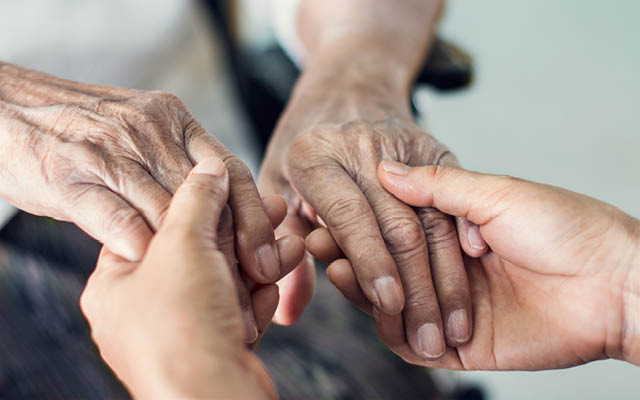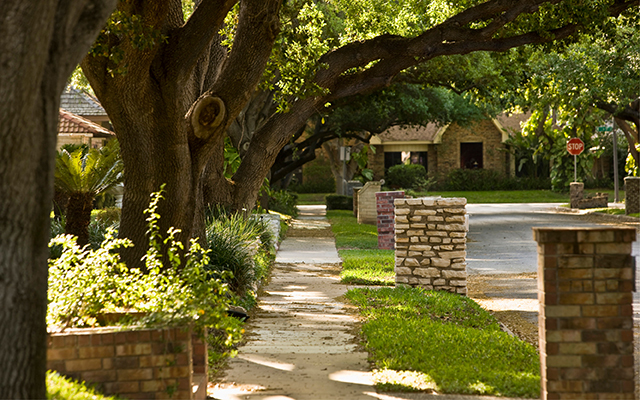I am five years older than My Lovely Wife, an age difference that occasionally invites mostly casual speculation about eldercare options. How would we handle, for example, a situation in which one of us became disabled? This, of course, was not among the various questions in play when we met 44 years ago and began the sometimes fraught, sometimes exhilarating process of deciding whether we belonged together. At that stage of our lives, a future clouded with disease and debilitation seemed as improbable as it was distant.
For many single, widowed, or divorced seniors, however, a new romance often comes yoked with potential obligations that require them to discard the rose-colored glasses of young lovers and take a more clear-eyed view of the struggles that may await them should they commit to one another. Chief among these is the prospect of providing care for a seriously ill or disabled partner at the expense of your own well-being.
A recent meta-analysis of several studies found that spousal caregivers tend to suffer from higher stress levels, impaired immune systems, and damaged cognitive skills. And a 2012 study showed they were more likely to die during the four years they provided care than a similar cohort that outsourced the care.
Beyond the science, though, most of us know friends, family, and colleagues who have struggled with that burden themselves. And while we can admire their fortitude and commitment, few seniors can say with any assurance that they’d be up to the task — especially if they find themselves falling in love with someone as old or older.
Chicago psychotherapist Linda Randall, for instance, was 78 and widowed when she began dating an old friend six years her senior. They fell in love, but when he asked to move in with her, she declined. “He was hurt at first,” Randall tells the New York Times. “But I said, ‘I like my space, and we’re different in how we live.”
It was more than simply a matter of protecting her domain, though. Her beau had suffered two heart attacks and a third seemed likely. Cohabitation presented Randall with the prospect of being saddled with the unwanted role of caregiver should he be stricken again. “I have friends who say they never want to meet anybody unless they’re 10 or 15 years younger, because they see it as having to move in and be the sole caretaker,” she explains. “I wasn’t about to do that.”
Instead, Randall and her beau joined a growing movement of elderly romantic partners who eschew marriage or cohabitation and opt for “living apart together.” Also known as LAT, the concept has long been popular in Europe and is gaining adherents among older couples in the United States and Canada. As Ingrid Arnet Connidis, PhD, a sociology professor at Western University in London, Ontario, explains, the primary motivating factor is a desire — especially among women — to skip the crushing responsibility of caring for an ailing partner.
“A big attraction of LAT is to avoid the potential responsibility of being a full-time caregiver,” Connidis tells the Times. “Women cared for their children, parents, and spouse, and want to avoid getting into these traditional gender roles.”
Research suggests these LAT couples typically provide emotional support, and while some are pressed into more comprehensive caregiving, they tend to lean on professionals for any full-time care needs. “Once they’re in that relationship, partners end up more willing to care for each other than they thought they’d be,” Cannidis notes, “but not necessarily to the same level as a marital partner.”
At the core of this phenomenon, of course, is the glaring lack of affordable in-home healthcare services in this country. The demand is undeniably strong in an aging society, but the supply of workers has always been woeful — and seems to be getting worse.
Two decades after a report by the Urban Institute and Robert Wood Johnson Foundation cited “low wages and benefits, hard working conditions, and a job that has been stigmatized by society” as the forces limiting the availability of professional in-home care, the pandemic has only highlighted the challenges seniors face when seeking help. As Robyn Stone, PhD, who coauthored the 2001 report, tells Kaiser Health News, “COVID uncovered the challenges of older adults and how vulnerable they were in this pandemic and the importance of front-line care professionals who are being paid low wages.”
Randall and her partner are more fortunate than most. When he underwent surgery earlier this year, she was able to hire a live-in caretaker (with his money) to help him through his recovery. And because he lives within walking distance of Randall’s home, he visited regularly with the help of his caregiver while recovering and now spends weekends with her when his caregiver is off duty.
New Yorkers Jill Spoon, 73, and John Backe, 74, have been navigating their LAT arrangement for the better part of a decade and have learned the importance of flexibility. When Backe underwent major heart surgery three years into their relationship, Spoon took him in and coordinated his care with the help of his two daughters during the several months of his recovery while she continued to work full-time. It’s a model they plan to use in the years to come. “I’d want to be involved enough because I care and love him, but not 24/7,” she explains. “I don’t have the energy for that.”
Spoon and Backe have successfully adapted to shifting conditions as their relationship evolved, but experts recommend that prospective LAT partners come to some understanding about caregiving expectations well before a serious affliction forces triage. Some even suggest seeking legal counsel to draw up agreements that would govern how to handle various contingencies.
That’s probably good advice for those of us who have chosen to make a home together, as well. Like most aging boomers, MLW and I hope to spend the rest of our days happily puttering around our current abode. To do so, however, we may have to begin contemplating the future a bit more urgently — and skeptically — than is our current style. It may be approaching faster than we think.





This Post Has One Comment
I am LAT with a man who is 13 yrs my senior. Although I like my space, I find carrying my backpack back and forth getting to be a pain. When I cook at his house I need something at my house. He can well afford medical care should something and also has 4 daughters (3 close by) that are willing to help with his care.
My question is how does one divvy their time to be involved with their partner yet have alone time. He is young for his age and is fun and interesting, but I still enjoy time by myself.
How are LAT partners doing this?